I am sure a lot of you are tired of looking at the inside of your own homes, so I invite you to take a look inside of mine. Specifically at my rock collection. It may be hard to believe but mineralogy was my first science love. When I was really little (like 4) I was obsessed with crystals and I remember having some books on crystals and minerals that had stickers and little facts. My favorite childhood board game was unironically rocky bingo. It wasn’t until I was older that I was seduced to the side of astronomy by beautiful Hubble images. I am pretty sure what sparked my interest in crystals and minerals was Sailor Moon, a cartoon charater that uses a magic crystal wand to fight. Sailor Moon was a huge part of my childhood; recently my mom found a kindergarten journal and in it I said that my new years resolution that year was to become Sailor Moon.
A lot of us know Tucson as a major center for astronomy and optics in the United States. It is also a center for gemstone enthusiasts such as myself. For about a month starting from the end of January to mid February the largest gem show on Earth takes over a good chunk of the town. Surprisingly a lot of our group has never gone! Understandably the gem show is overwhelming, but here are some tips and tricks I have picked up as a novice collector and survivor of two gem shows.
So where to start?
If you want a bunch of sparkly rocks for cheap I recommend starting off with apophyllite. Apophyllite is a crytal that usually comes from India. Typical colors are white/clear and green. This stuff looks similar to quartz and is dirt cheap. My piece of apophyllite the size of my head was $35. You can find whole flats of this crystal for around that price at the gem show.
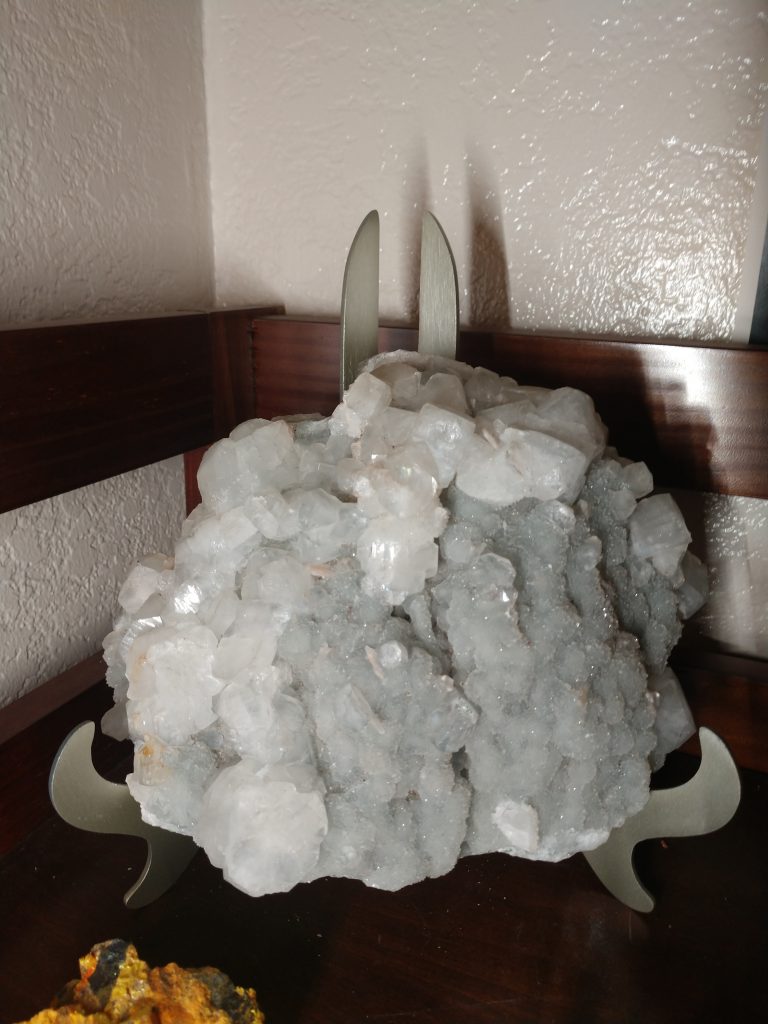
Apophyllite, especially green apophyllite is typically found in a matrix of stilbite. It has a waxy apperance and is usually a peach or yellowish color.
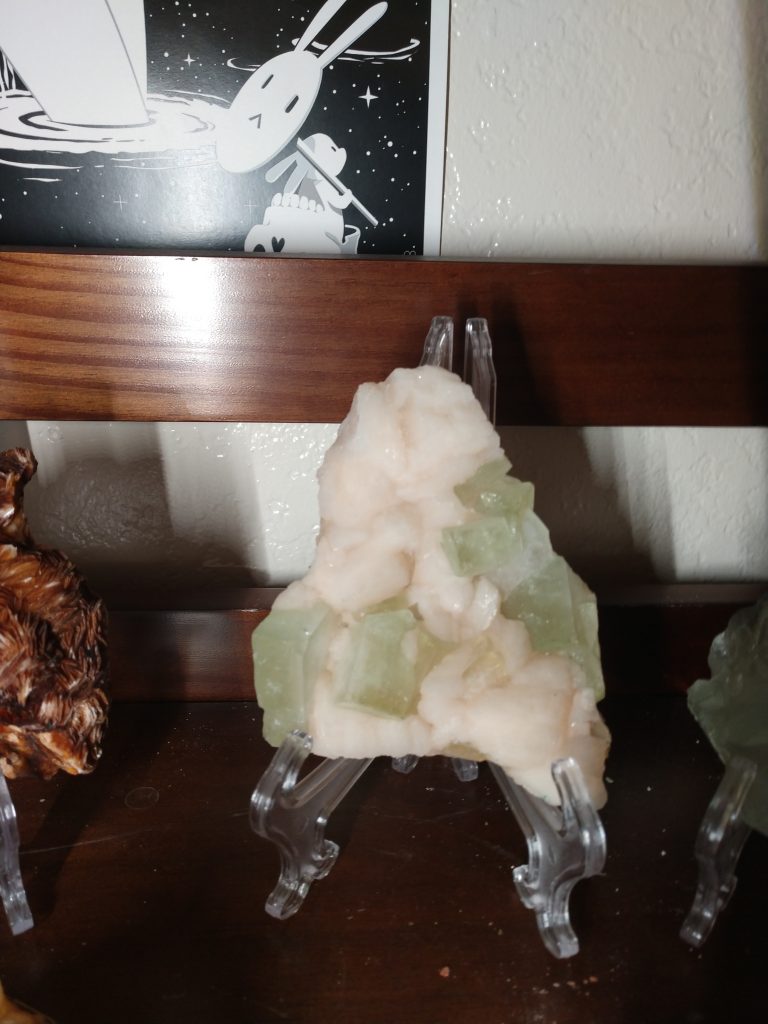
You can even find apophyllite as a matrix for other crystals. One of my favorite rocks I own is this spray crystal (I don’t actually know what the crystal is), on a green apophyllite matrix. This rock is awesome and not expensive ~$30.
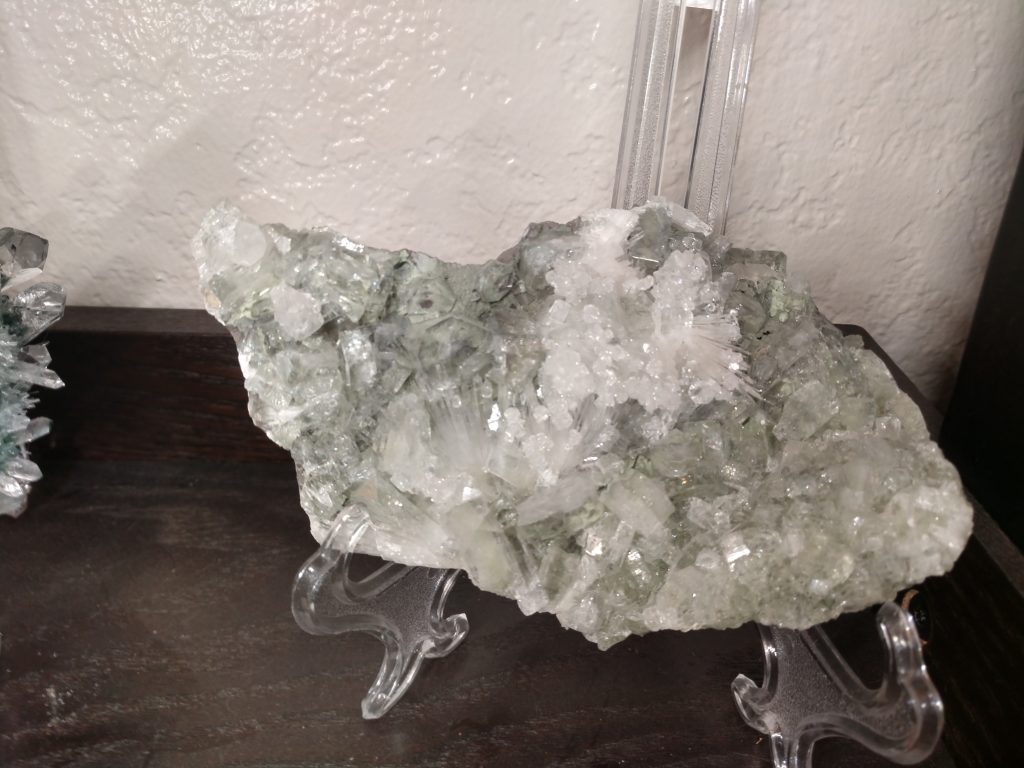
Another great option for beginers is calcite. Calcite geodes look very similar to quartz geodes and are typically a clean snow white color. Calcite even fluoresces a bright pink color under black light! Calcite geodes the size of your fist should be around $5, and geodes the size of your head should be around $30.
Depending on what matrix calcite is on the crystal appearance can change drastically. I have found that when on a pyrite matrix they have wafer like crystals.

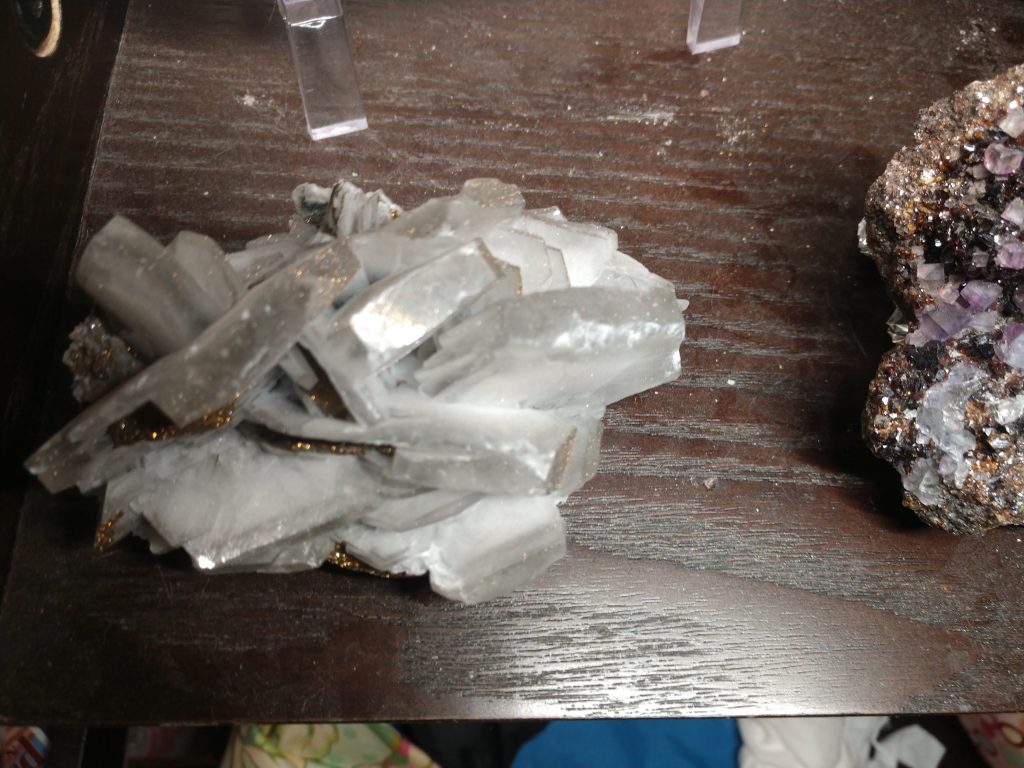
They can also come in funky pyramid crystals. The most expensive calcite specimens I have seen are honey calcite crystals that can grow in these perfect spikes. They cost hundreds of dollars.
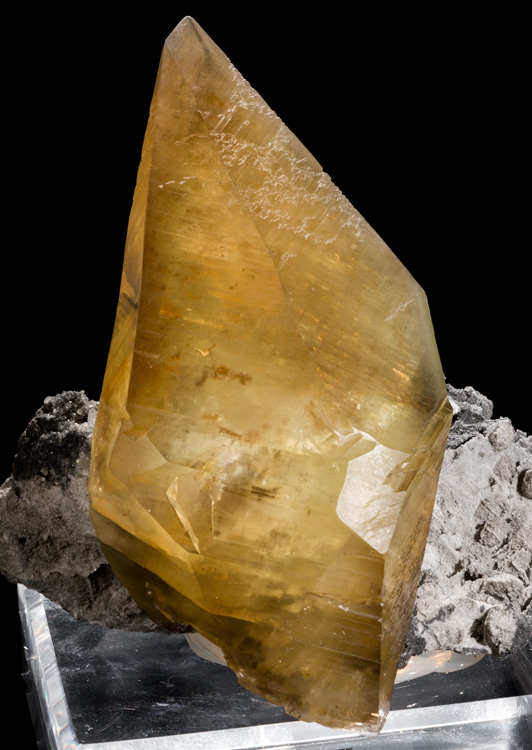
Oh what about quartz Lauren? Surely it must be cheap right? It is so common!
Well I do in fact have a large collection of quartz, an entire shelf worth with some spill over onto other shelves.
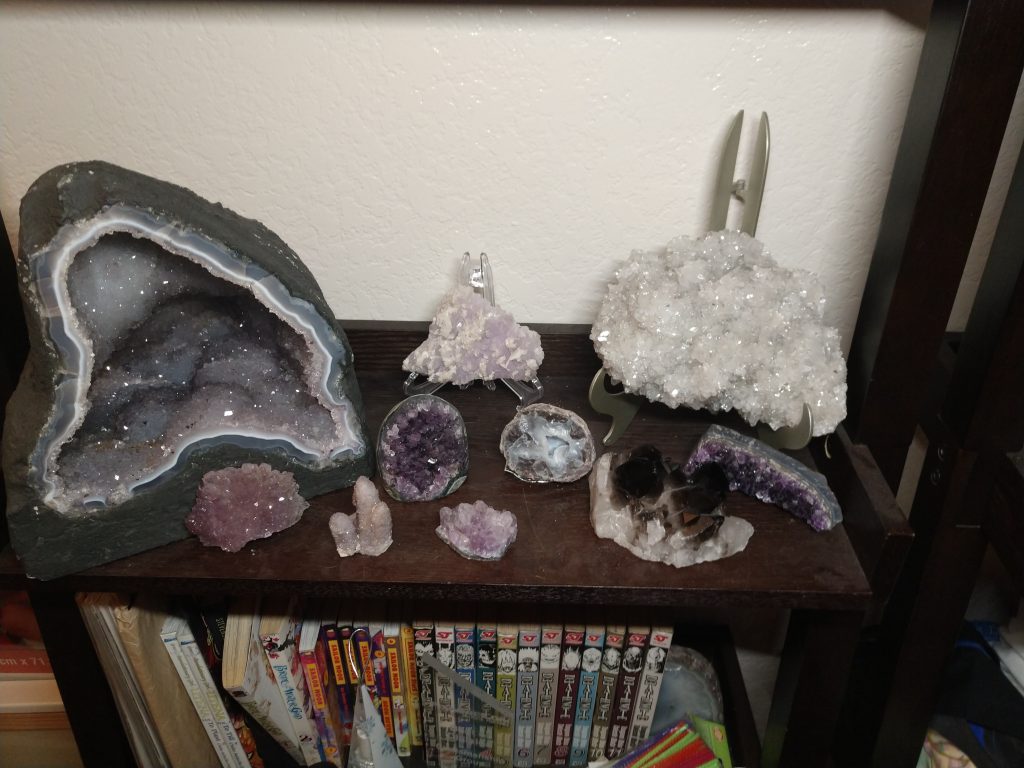
Why I don’t recommend starting with quartz/amethyst is that it is super easy to get ripped off. This is because the price for quartz has sky rocketed due to a subculture that believes crystals have magic energy chakra. Most of my quartz specimens I have aquired through a hook-up from my mineral guy. It sounds sketchy, but he is a nice old man who sells rocks at the Saint Phillips Plaza farmers market and has super reasonable prices.
For instance this big boy geode here is over $100 (wholesale price!) at the gem show. I paid half of that which is kind of ridiculous. I think he was tired of lugging heavy geodes like this around. He said it was his last one and wanted it gone. This one wieghs around 25 pounds by itself. Imagine having to carry around boxes full!
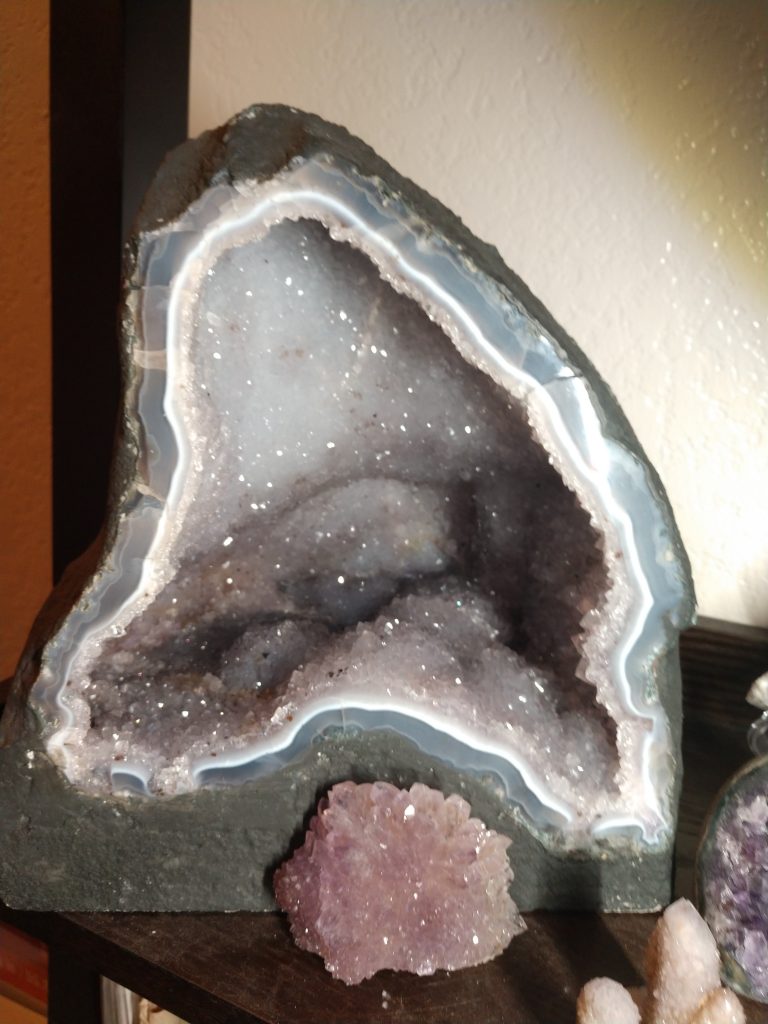
So if you do decide to shop for quartz I recommend taking your time, and comparing costs from a lot of different vendors. Pricing for minerals is arbitrary after all!
To continue with quartz/ amethyst there are a lot of really cool specimens you can collect besides giant geodes. One of my favorite purchases this year’s gem show was this amethyst growing in a flower formation.
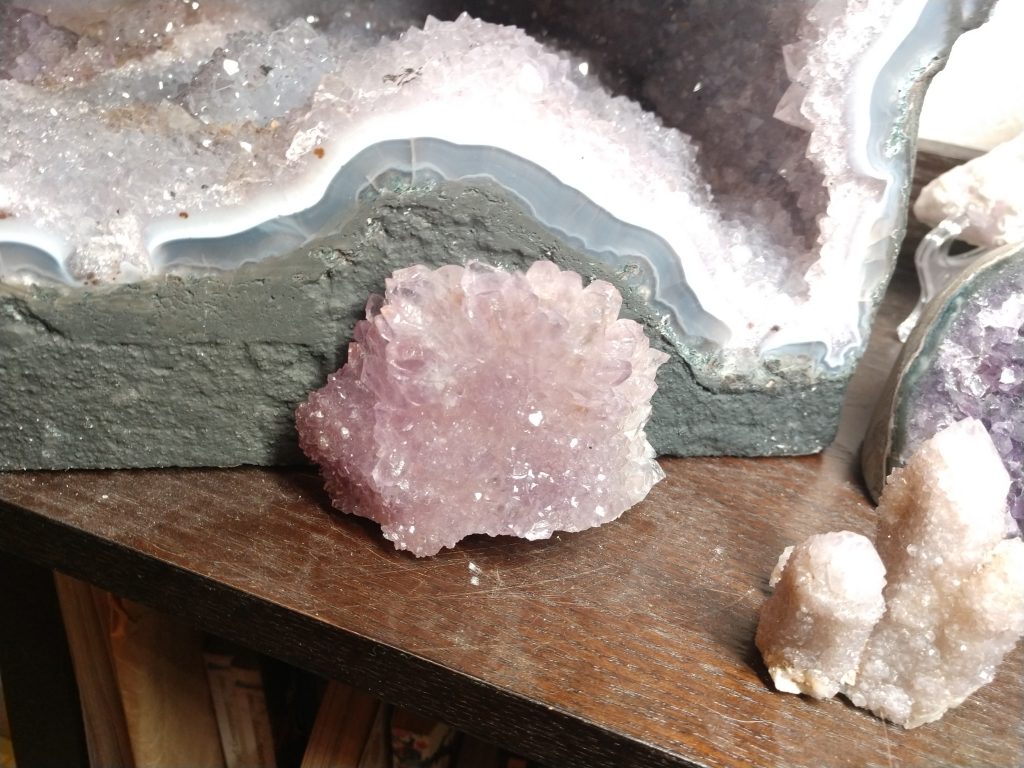
You can also get cactus formation:
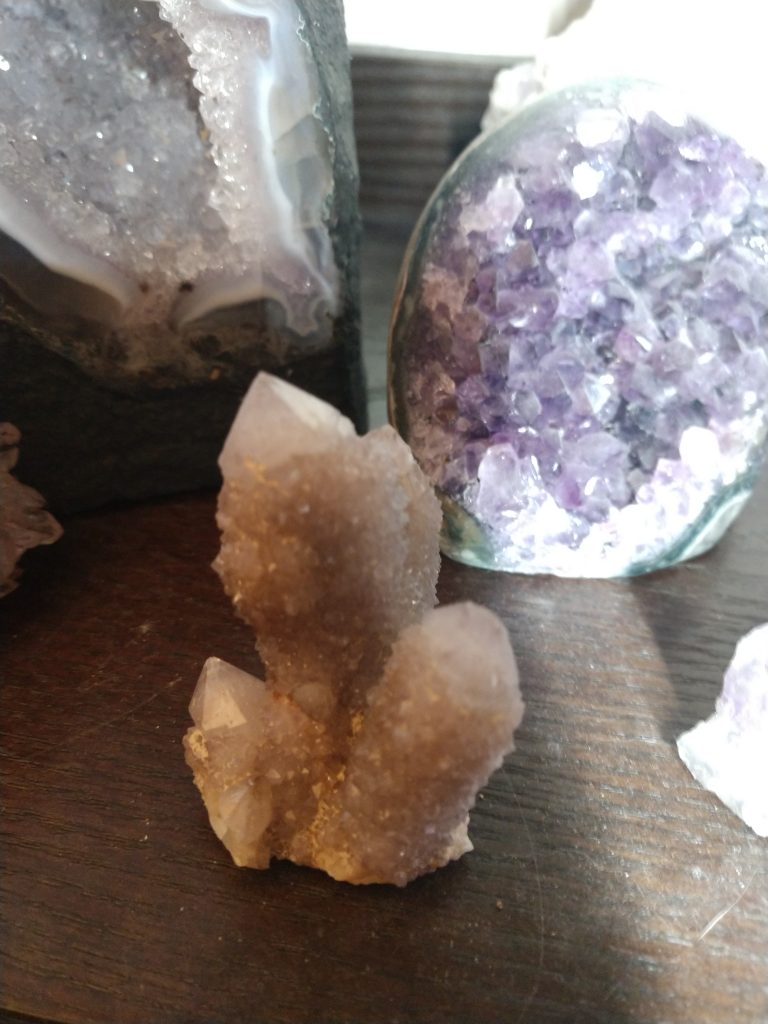
And man made formations like this quartz crystal that has a secondary crystal artificially grown on top of it:
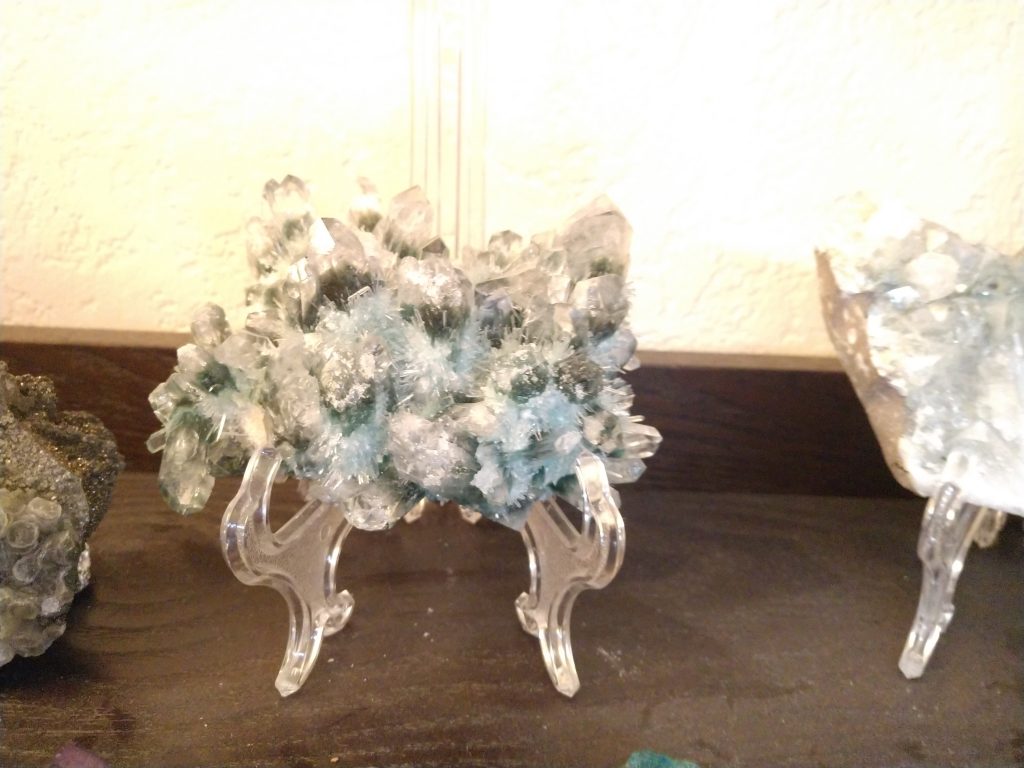
There are many other formation types and colors too for both natural and artificial quartz.
Ok so we covered some cheap options, but what if you want to start collecting seriously? Well its not exactly rock-et science, (pun credit to Logan), but it can be confusing. Pricing for minerals is for the most part arbitrary. There are some factors that I have seen influence price. The most obvious is size. If the specimen itself is large (I have seen geodes 10 feet tall!) or the crystals themseves are large typically the price goes way up. The other factors are color, structure, clarity, and general aesthetic. These are a bit harder to figure out. What I typically do is look up a museum quality specimen that serves as a standard for comparison. For an example I will use one of my favorite minerals called vanadinite. Vanadinite is a crystal found in Morocco. It has very cool hexagonal crystals. It is also really cheap to collect. Typically when a specimen is excellent or museum quality, the price range can be in the thousands depending on the type of mineral and the size. A fist size of excellent vanadinite is around $100!
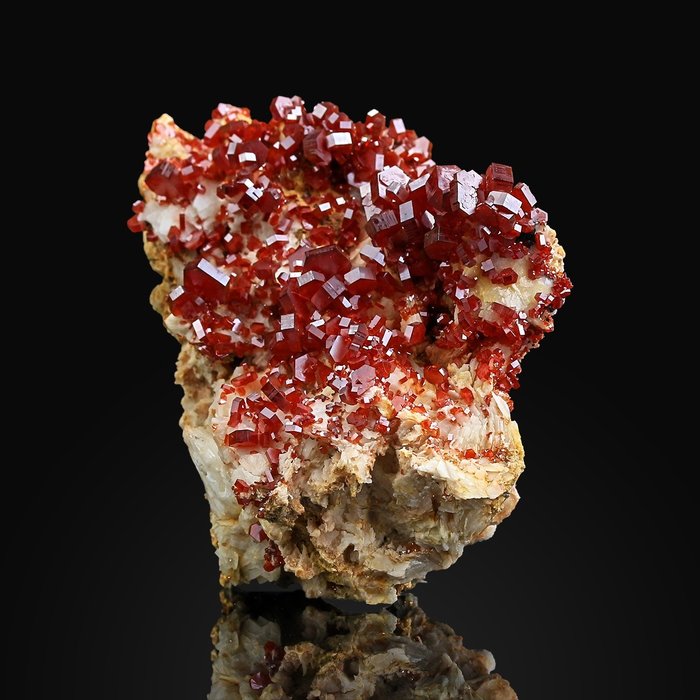
This is a very nice specimen of vanadinite. It has a cherry red color, Large and distinct crystals, with no damage to the crystals themselves. Some examples of damage are chipping or scratches on the crystals. The crystals from an excellent specimen are a solid color, so they are not see through or have any cloudiness.
Now here are my junky vanadinite crystals:
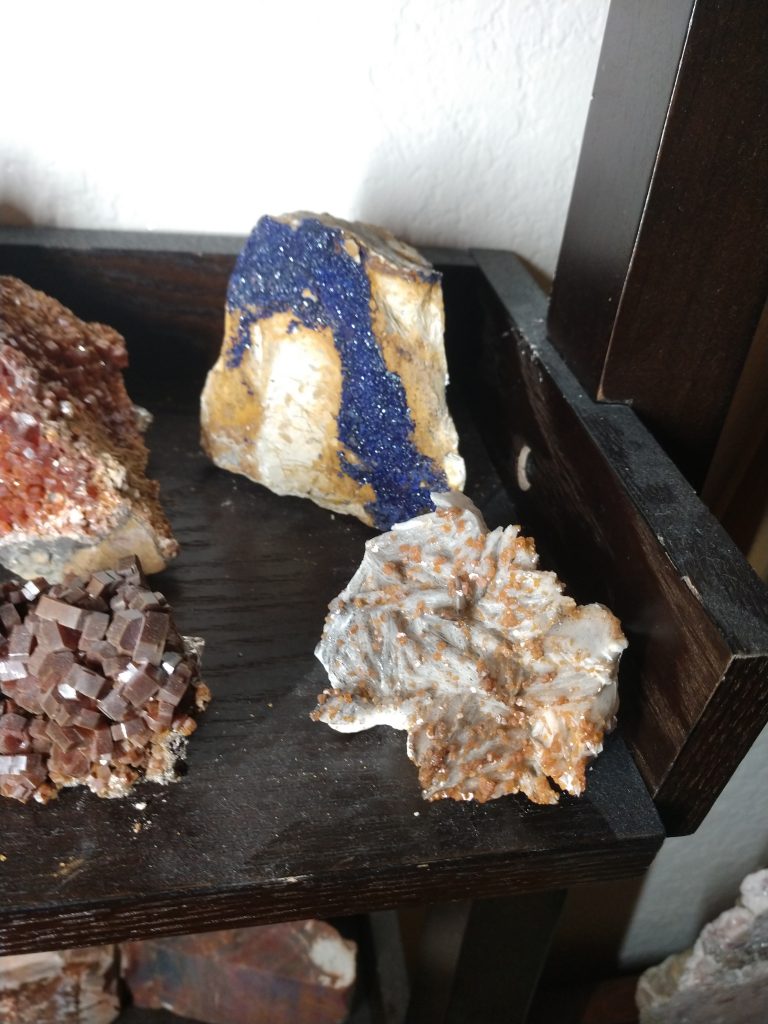
The color is off, a brown/orange color, and the crystals are super tiny. This is one of the first rocks I ever bought, and I got completely ripped off because I had no idea what vanadinite was supposed to look like, or how common it actually is. I had never seen or heard of it before!
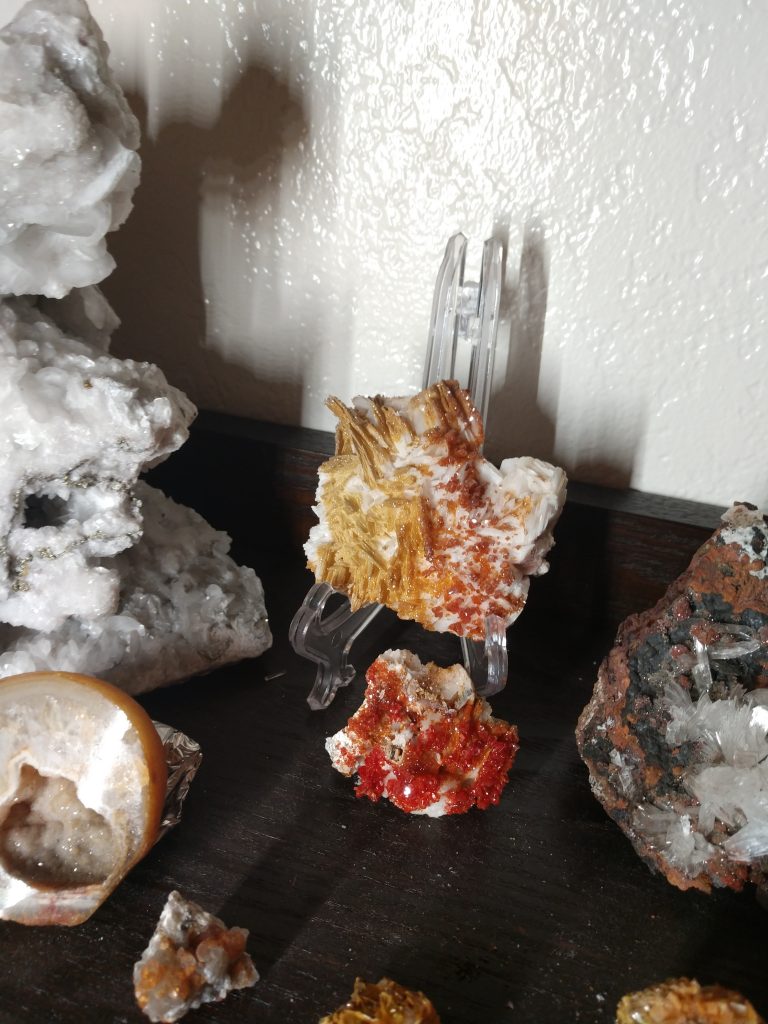
These specimens are getting better. The top one has two colors (yellow and orange) which is neat, but it is still off color and has tiny crystals. The one on the bottom has the desired color but the aesthetics aren’t great because the crystals are small and indistinct. These are about $10 rocks compared to the $100+ of an ‘ideal’ vanadinite.
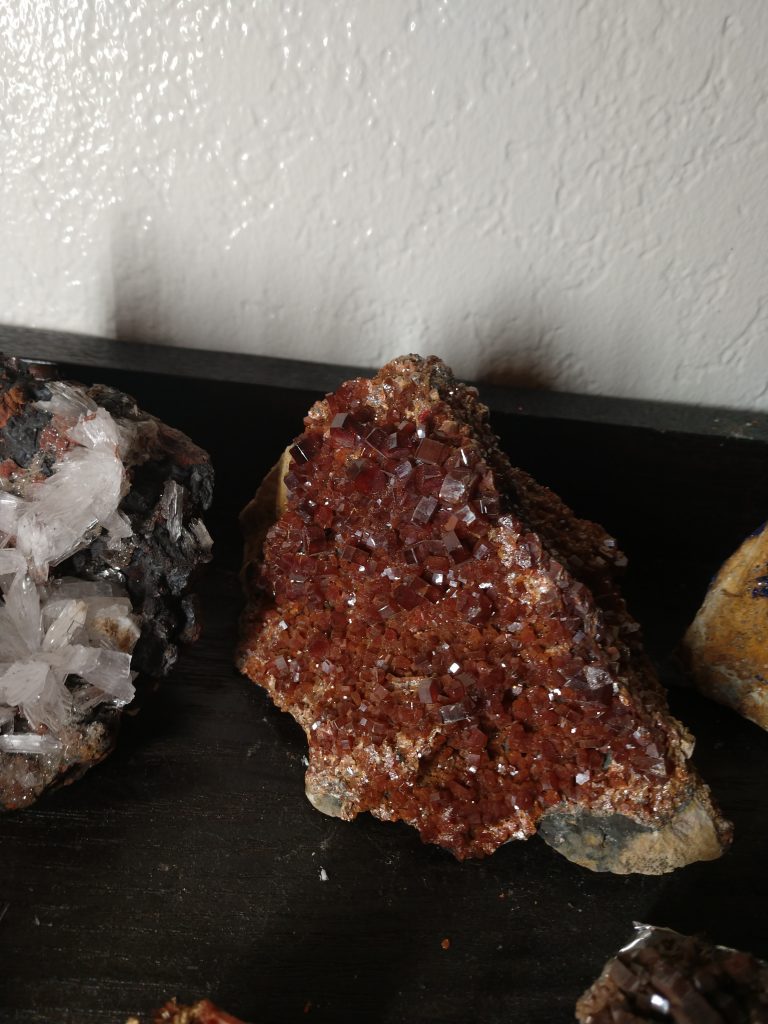
This one is getting closer. The color is almost right, but still too brown, and a little cloudy. It is a larger piece, bigger than my fist, and the crystals are a decent size. This one was about $40, still way below the ‘ideal’. If that is too much work for you, don’t spend more then $30 on a single rock you don’t know about and you can’t go too wrong.
Arizona is a great place to collect because we have a lot of unique minerals coming out of Arizona mines. The most common are azurite and malachite that both have copper in their chemical makeup. They are found in a lot of the copper mines around. Both minerals are brightly colored, making them great display rocks.
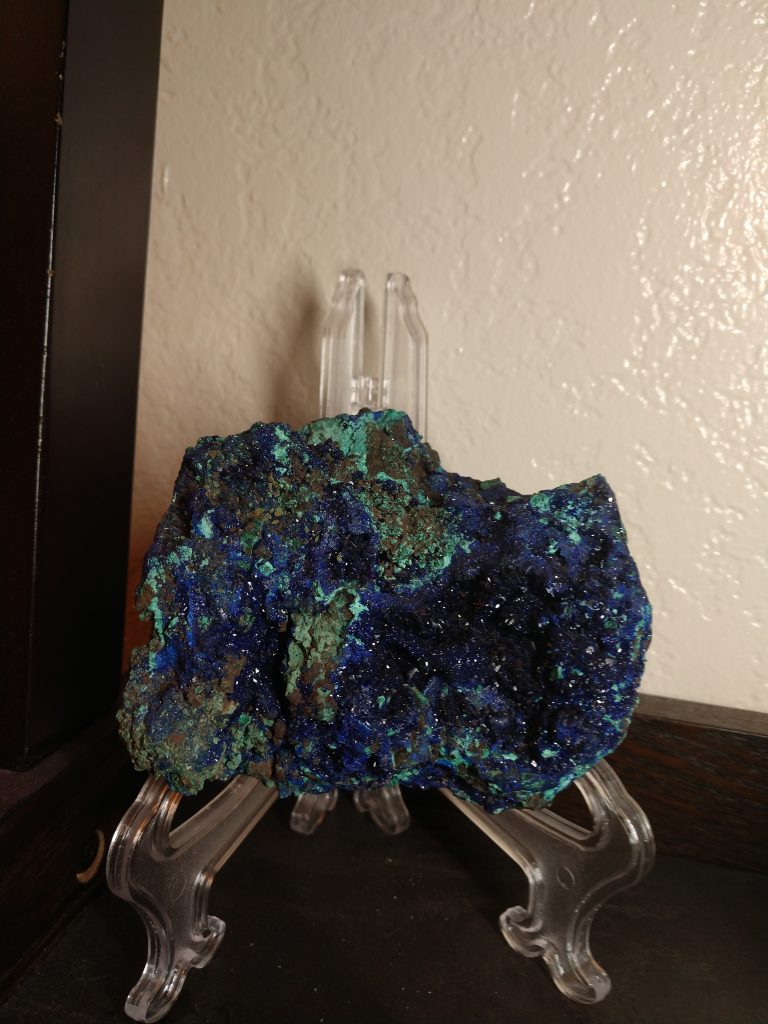
Another copper based crystal I have is atacamite which is found in the Atacama desert in Chile, where the Magellan Telescope is!
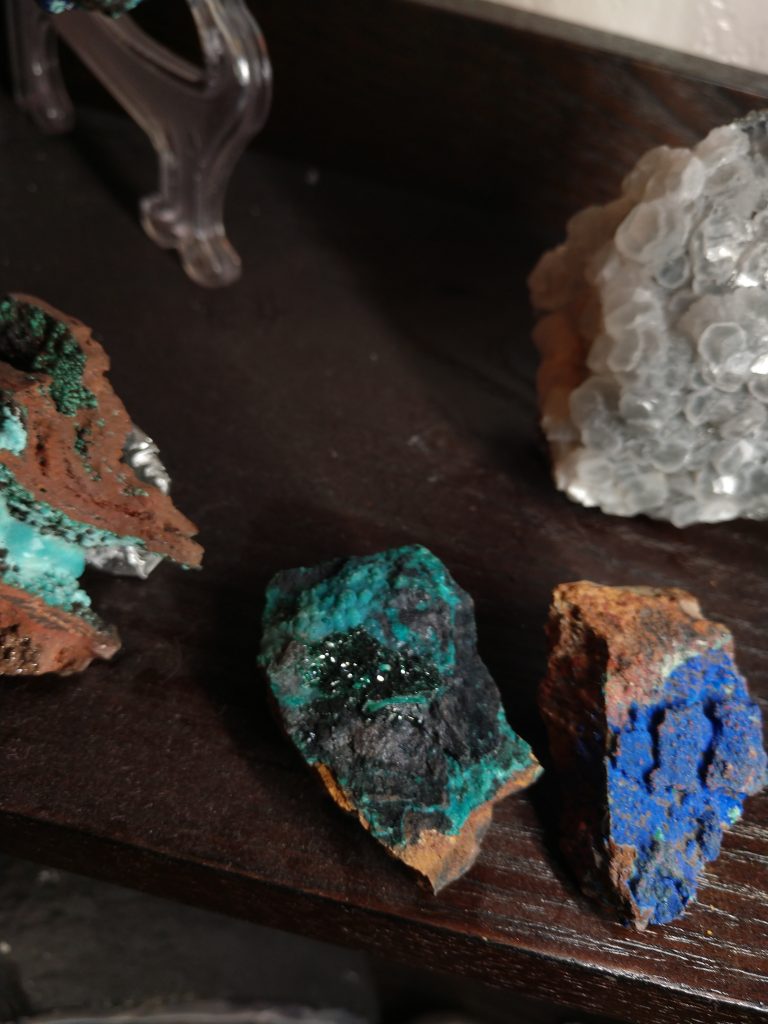
Our state mineral is wulfenite. Some of our mines in Arizona produce the ideal standard the world compares samples to. Unfortunately I don’t have any blog worthy samples of it (only really junky stuff), because even decent wulfenite is very expensive.
Lastly, Arizona is known for our petrified wood! Some of you may know that Logan and I took a trip to Petrified Forest National Park right before the coronavirus quarantine went into effect.
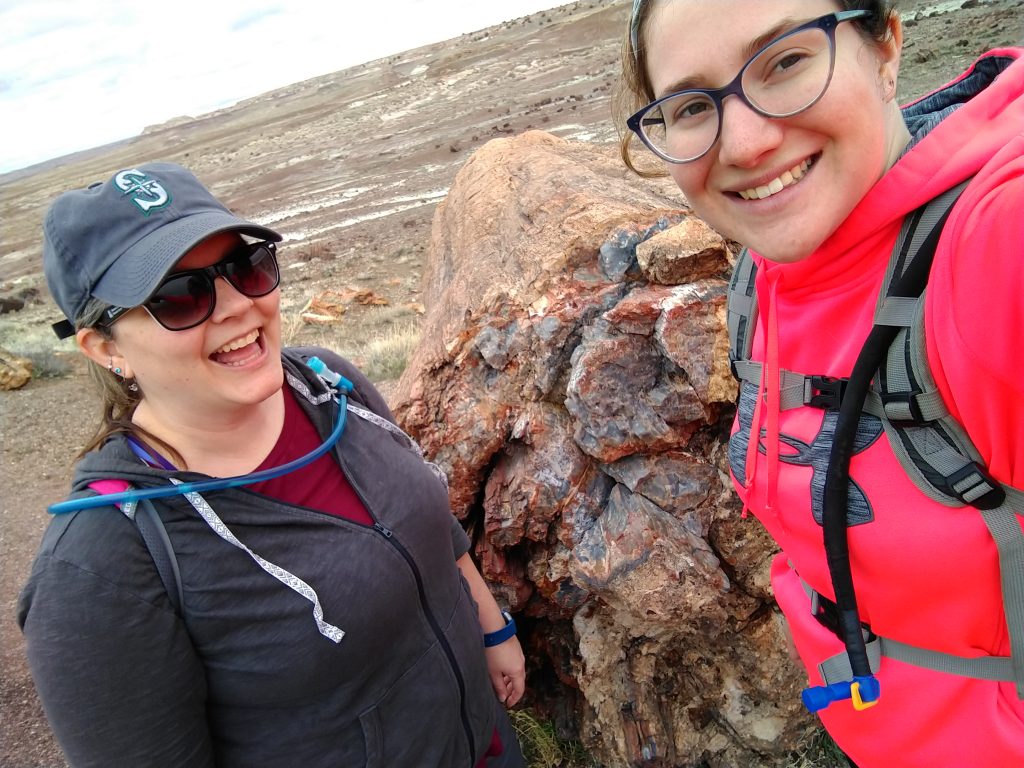
We learned that Arizona has a special type of petrified wood called rainbow petrified wood. The primary color is typically a beautiful red, with blacks, yellows, blues, greens, and whites mixed in. Of course I had to buy a piece in the gift shop :).

I wish I could say these are the only rocks I own, but I have many more that didn’t make an appearance in this post. Hopefully this helps you start your own collection :).
Song of the day: When I am feeling emo I like to stare at my rocks.